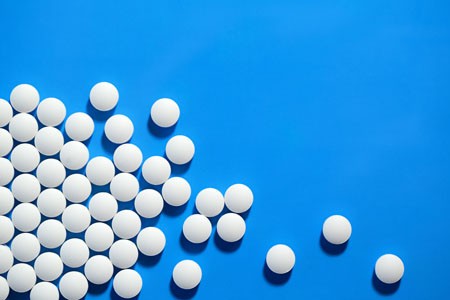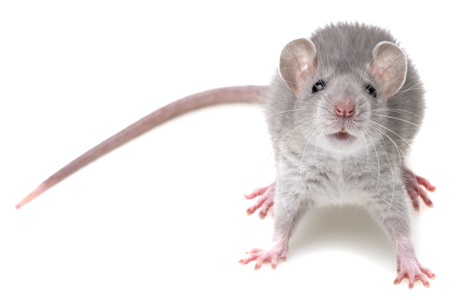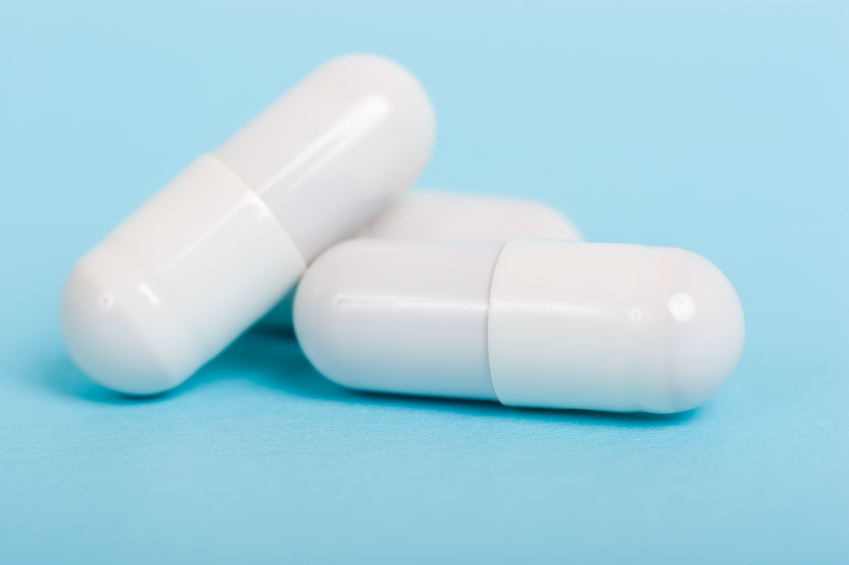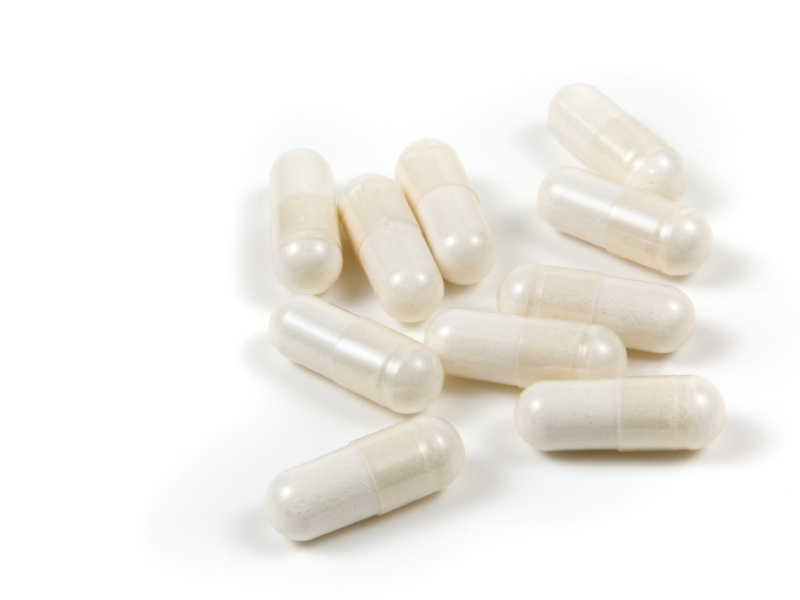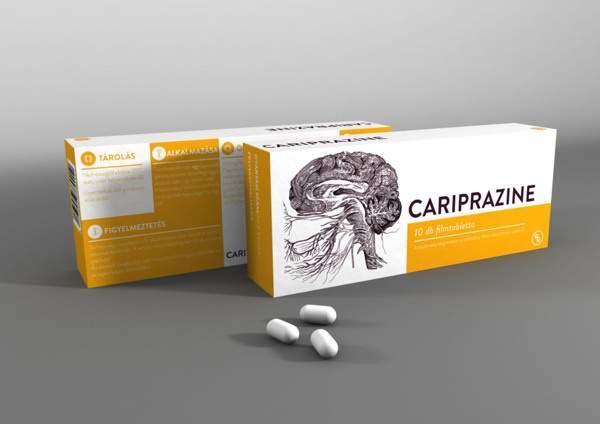Lithium Safely Reduces Mania in Kids 7–17
The first large, randomized, double-blind study of lithium in children and teens has shown that as in adults, the drug can reduce mania with minimal side effects. The study by researcher Robert Findling was published in the journal Pediatrics in October. Lithium is the best available treatment for adults, but until now little research had been done on treatments for children and teens with bipolar disorder.
In the study, 81 participants between the ages of 7 and 17 with a diagnosis of bipolar I disorder and manic or mixed episodes were randomized to receive either lithium or placebo for a period of eight weeks. By the end of the study, those patients taking lithium showed greater reductions in manic symptoms than those taking placebo. Among those taking lithium, 47% scored “much improved” or “very much improved” on a scale of symptom severity, compared to 21% of those taking placebo.
Dosing began at 900mg/day for most participants. (Those weighing less than 65 lbs. were started at 600mg/day.) Dosing could be gradually increased. The mean dose for patients aged 7–11 was 1292mg/day, and for patients aged 12–17 it was 1716mg/day.
Side effects were minimal. There were no significant differences in weight gain between the two groups. Those taking lithium had significantly higher levels of thyrotropin, a peptide that regulates thyroid hormones, than those taking placebo. If thyroid function is affected in people taking lithium, the lithium dosage may be decreased, or patients may be prescribed thyroid hormone.
Saphris Reformulated for Kids with Bipolar I
The atypical antipsychotic asenapine has been reformulated for bipolar I disorder in children aged 10–17. The drug (trade name Saphris) was approved by the Food and Drug Administration (FDA) in 2009 for adults with schizophrenia and bipolar disorder. It is sometimes used as a treatment for mixed episodes (depression with some symptoms of mania).
The new formulation consists of 2.5mg tablets that are taken sublingually (under the tongue), and are available in a black cherry flavor. These can be prescribed as monotherapy for the acute treatment of manic or mixed episodes in children and teens.
HDAC Inhibitors Treat Mania-Like Symptoms in Mice
Mice with a particular genetic mutation affecting circadian rhythms exhibit symptoms that resemble those of human mania: disruption of sleep and wake cycles, hyperactivity, and reduced anxiety and depression. It has been found that these behaviors can be normalized by inhibiting a type of enzyme called histone deacetylases (HDACs). HDACs bring about epigenetic changes to gene transcription by removing acetyl groups from histones, the structures around which DNA is wrapped. Removal of the acetyl group tightens the structure of the DNA, making it more difficult to transcribe. The drug valproate (trade name Depakote) is one type of HDAC inhibitor. It prevents the removal of the acetyl groups, loosening the structure of the DNA, making it easier to transcribe.
A recent study by Ryan Logan and colleagues compared the effects of valproate and other HDAC inhibitors on mice with a mutation in the Clock delta 19 gene, which causes mania-like symptoms. Valproate and the HDAC inhibitor SAHA both normalized the mice behavior. MS275, another HDAC inhibitor that targets only class I HDACs, also normalized the behaviors. The researchers were able to determine that all of these treatments targeted a specific class I HDAC called HDAC2, which has been implicated in schizoaffective and bipolar disorders.
These data link epigenetic mechanisms (HDAC inhibition) to the antimanic effects of valproate in this animal model of mania. It appears that maintaining the presence of acetyl groups on histones has antimanic effects in mice with a mutation in the Clock delta 19 gene.
More Evidence That Lithium Prevents Mania and Depressions
There is a large body of research showing that lithium is better than placebo and a variety of comparison drugs at preventing manic episodes in people with bipolar disorder. It has been less clear whether lithium is as effective in preventing depressions in bipolar patients. In a 2014 meta-analysis in the International Journal of Bipolar Disorders, Emanuel Severus and colleagues confirmed that lithium was more effective than placebo at preventing mood episodes overall and manic episodes. In a fixed effect statistical analysis, lithium was also better at preventing depressive episodes.
The portion of the meta-analysis comparing lithium to placebo included seven randomized controlled trials that included a total of 1,580 patients. Lithium was more likely than placebo to lead to patients dropping out of a study for reasons other than a mood episode, but patients who received lithium were more likely to complete their clinical trials.
Another part of the meta-analysis compared lithium to anticonvulsant drugs. Seven trials were included totaling 1,305 patients. Lithium was better than anticonvulsants at preventing manic episodes, but equally effective at preventing mood episodes overall and depressive episodes specifically. There was also no difference in patients dropping out of the trials or completing the trials.
The researchers concluded that lithium remains the most valuable treatment option for bipolar disorder, because no other drug has such consistent efficacy in preventing manias and depressions and mood episodes in general.
Lithium Effective In Adolescent Mania And Increases White Matter Volume
At the 2014 meeting of the American Academy of Child and Adolescent Psychiatry, researcher Adelaine Robb reported that in 81 children with mania (aged 7-17), lithium was superior to placebo in reducing the severity of mania measured on the Young Mania Rating Scale. There had been some debate about the efficacy of lithium in young children with mania, but this study clearly indicates lithium’s effectiveness. The drug is approved by the Federal Drug Administration (FDA) for use in patients with bipolar disorder aged 12 and up.
Another researcher, Vivian Kafrantaris, found that in children who averaged 14.5 years of age, lithium increased the volume of the corpus callosum, a bundle of neural fibers that connects the brain’s right and left hemispheres. Lithium also normalized white matter integrity in other neural fiber tracts—the cingulum bundle and the superior longitudinal fasciculus. The authors concluded that lithium may “facilitate microstructural remodeling of white matter tracts involved in emotional regulation.”
Editor’s Note: There is much research showing that in adults, lithium has positive effects on the brain, including increases in hippocampal and cortical grey matter volume. Now it appears that lithium can improve white matter integrity in the developing brain as well.
Cariprazine for Mania Appears Safe and Well-Tolerated
At the 2014 meeting of the International College of Neuropsychopharmacology, researcher Lakshmi Latham presented a poster on three studies of the atypical atypical antipsychotic caripazine, a treatment that has not yet been approved by the Federal Drug Administration. We call it an atypical atypical because it is a partial agonist at dopamine D2 and D3 receptors, meaning it stimulates the receptors a little, but in the presence of high levels of dopamine it blocks excess activity by sitting on the receptor and preventing the actions of the excess dopamine. Aripiprazole is also a partial agonist at dopamine and serotonin 5HT1a receptors, but caripazine differs in that it has a particular affinity for the D3 receptor.
Previous analyses had revealed that cariprazine has good acute antimanic efficacy. All three studies described by Latham were randomized, double-blind, placebo-controlled three-week studies in patients with bipolar mania. In total the studies included 1065 patients, 442 of whom received placebo and 623 of whom received cariprazine.
Cariprazine doses from three studies were pooled, and ranged from 3-12 mg/day. Additional analyses evaluated the 3-6 and 9-12 mg/day groups specifically.
Approximately 70% of patients completed the study. The most common side effects included akathisia or restless legs (placebo, 5%; cariprazine, 20%), extrapyramidal disorder characterized by abnormal motor symptoms (5%, 13%), restlessness (2%, 6%) and vomiting (4%, 9%). The incidence of serious side effects was similar across the placebo and the treatment groups. Side effects that led to discontinuation of participation in the study occurred in 7% of placebo patients and 12% of cariprazine patients. Suicidal ideation was an infrequent side effect (placebo, 4; cariprazine, 2), and there were no suicide attempts.
Mean changes in weight were small (averaging 0.17kg in patients taking placebo and 0.54kg in those taking cariprazine), and the proportion of patients with 7% or higher increase in weight were similar across the two groups (both 2%). Mean changes in blood pressure and pulse were slightly greater with cariprazine and were related to dosage. Cariprazine was not associated with mean increases in electrocardiogram (EKG) parameters except for a slight increase in ventricular heart rate versus placebo (5.0 and 0.9 bpm, respectively). Mean changes in lipids and glucose were generally small and similar between groups. Levels of the hormone prolactin decreased in both groups.
Latham concluded that cariprazine treatment for three weeks was safe and well-tolerated.
Lithium Plus An Atypical Antipsychotic Was More Effective Than Valproate Plus An Atypical Antipsychotic In One Study, But Not Another
Evaristo Nieto et al. of Spain presented a poster about the naturalistic study of the efficacy of acute treatment of manic inpatients with lithium and valproate at the 2014 meeting of the International College of Neuropsychopharmacology. In the lithium group, all patients were treated with lithium and oral antipsychotics (N=85). In the valproate group, all were treated with valproate and oral antipsychotics (N=92). Outcome was measured using scores on scales for mania and for general functioning (the YMRS and the CGI-S). The atypical antipsychotic was typically olanzepine or risperidone.
Nieto et al. found that the mean change in CGI scores from baseline to the day of discharge was significantly higher in the lithium group (-2.84 versus -2.6), and concluded that, “Although it is used in more severe cases, treatment of manic inpatients with lithium associated with antipsychotics is more effective than treatment with valproate associated with antipsychotics.”
However, W.M. Bank et al. came to the opposite conclusion in a Korean study. Bank et al. “compared the 1-year rehospitalization rates of first-episode bipolar manic patients?who were discharged while being treated with lithium or valproate in combination with an?atypical antipsychotic….The rehospitalization rate was 17.3% during the 1-year follow-up period.”
Bank et al. found significantly higher rates of rehospitalization in the lithium (23.1%) compared to the?valproate (13.3%) group using the Kaplan-Meier formula for estimations.
Lithium Superior to Valproate at Preventing Manias and Depressions
 In a special symposium on bipolar disorder at the 2014 meeting of the American Psychiatric Association, researcher Mike Bauer reviewed a new meta-analysis that showed lithium not only has significant effects in preventing manias, but also depressions. Researcher Geddes et al. had, in a previous study called BALANCE, found that lithium was superior to valproate (Depakote). Together these findings led Bauer to the conclusion that lithium is under-used in the treatment of bipolar disorder, especially in the US, where lithium is prescribed less often than valproate.
In a special symposium on bipolar disorder at the 2014 meeting of the American Psychiatric Association, researcher Mike Bauer reviewed a new meta-analysis that showed lithium not only has significant effects in preventing manias, but also depressions. Researcher Geddes et al. had, in a previous study called BALANCE, found that lithium was superior to valproate (Depakote). Together these findings led Bauer to the conclusion that lithium is under-used in the treatment of bipolar disorder, especially in the US, where lithium is prescribed less often than valproate.
An article by researcher Kessing in the British Journal of Psychiatry in 2012 relied on naturalistic follow up data and also showed that lithium was superior to valproate in preventing hospitalizations.
A study by researcher Willem Nolen indicated that in mono-therapy, levels of lithium in the blood needed to be 0.6 meq/L or higher in order for lithium to work better than placebo. Lithium augmentation that produced lower blood levels of 0.3 meq/L was not significant on its main outcome measure of preventing new episodes. However, compared to treatment as usual, those randomized to lithium used lower doses of atypical antipsychotics, and other data indicated that these patients had fewer suicide attempts and increased hippocampal volume.
Bauer noted that lithium-related goiter and low thyroid are easily treated, and that kidney damage while taking lithium can be prevented by avoiding episodes of lithium intoxication. It is easy to conclude that lithium should be used more often, especially given its positive effects against suicide and brain gray matter and hippocampal volume loss.
New Drug Cariprazine Has Anti-Manic Effects
Cariprazine is a new antipsychotic drug from Hungarian company Gedeon Richter. It functions as a dopamine D3 and D2 partial agonist. The drug has shown significant antimanic effects in three placebo-controlled studies. At the 2014 meeting of the American Psychiatric Association, researcher Robert E. Litman presented findings that 32% of patients with moderate to severe mania improved to a point of minimal or no illness while taking cariprazine, versus 22% who improved similarly while taking placebo. Doses in the studies Litman presented ranged from 3mg/day to 12mg/day.
At the same meeting, researcher Lakshmi N. Yatham discussed cariprazine tolerability. At a mean dose of 7.44mg/day, side effects of cariprazine compared to placebo included akathisia (restless legs) in 20% of patients compared to 5%, extrapyramidal side effects (irregularities in movement) in 13% of patients compared to 5%, vomiting in 9% of patients compared to 4%, and restlessness in 6% of patients compared to 2%. Twelve percent of patients discontinued treatment due to side effects while taking cariprazine, compared to 7% taking placebo. Weight increased by an average of 0.54kg among patients taking cariprazine compared to an average of 0.17kg among those taking placebo. Yatham and colleagues concluded that cariprazine treatment is generally safe and well-tolerated.
It is expected that data on the positive effects of cariprazine in bipolar depression in two placebo-controlled studies will soon be published.
Also at the meeting, researcher Nika Adham et al. reported that in animal studies, cariprazine had greater affinity for the dopamine D3 receptor than aripiprazole (Abilify), another partial agonist at D2 and D3 receptors. D3 receptors are important for the regulation of cognition and mood. It is expected that cariprazine might eventually be useful in the treatment of schizophrenia.
Different Psychotherapies for Different Illness Characteristics
Psychotherapy can play an important role in treating mental illness. At the 2014 meeting of the International Society for Bipolar Disorders, researcher F. Colom gave a plenary talk indicating that just like pharmacotherapy, psychotherapy should differ depending on characteristics of the illness—both its severity and whether the patient has more manic or more depressive symptoms.
For less severe illness with more depression, Colom explained that cognitive behavioral therapy (CBT) is ideal.
Psychoeducation and family focused therapy (FFT) is recommended for intermediate severity, with a focus on maintaining remission. Family focused therapy also works for early (prodromal) symptoms, as reported by researcher David Miklowitz et al. in 2013.
Lars Kessing et al. recently reported that specialty treatment in a clinic (including psychoeducation and vigilance to breakthrough symptoms that may suggest a new episode is imminent) is highly effective following a first episode of mania.
For more severe illness, Colom recommends cognitive remediation and rehabilitation to decrease illness burden and increase functioning. Functional remediation focuses on communication, includes homework, and teaches skills such as how to deal with money, time, and organization. It also helps improve social cognition.
For the most severe illness, palliative care to relieve symptoms and decrease illness impact is recommended. Colom noted that cognitive behavioral therapy is less effective with patients who have experienced more than 12 episodes (reported by Jan Scott et al. in the British Journal of Psychiatry in 2006), as is psychoeducation (Renares et al. 2010, Colom et al. 2014). These data re-emphasize the importance of early intervention, when these psychotherapeutic approaches are more helpful. Colom stresses the importance of behavioral cognitive therapy (BCT) rather than cognitive behavioral therapy (CBT) for those late in the illness whose episodes often arrive spontaneously, unprecipitated by psychosocial stress, and one needs more behavioral approaches to the brain’s habit memory system located in the striatum, which may drive highly recurrent illness.


